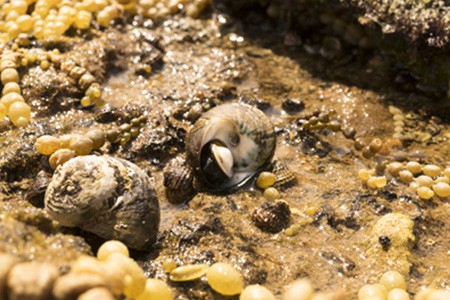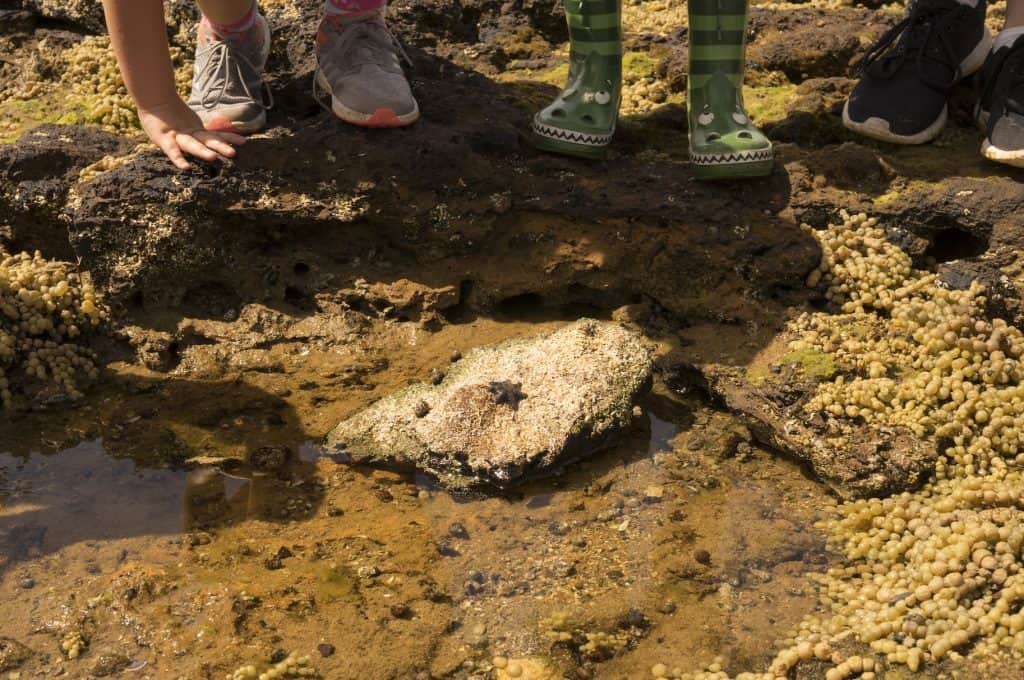Species Interactions in the Intertidal Ecosystem
-
Biodiversity
-
Transect/Quadrat sampling
-
Species abundance/Distribution
-
Trophic Levels
-
Food webs



Excursion Program Overview
Students will participate in theory and field activities to gain a better understanding of the interactions between intertidal species at Ricketts Point Marine Sanctuary. They will be introduced to trophic levels, food webs and the potential impacts of human activities on marine ecosystems. Students will conduct a field investigation to determine the abiotic and biotic factors present in the intertidal zone. Fieldwork skills including quadrat surveys, species identification, classification, observation and data recording will also be developed.
Your program includes:
• Overview of Victoria’s Marine National Parks systems and the role they play in the protection of Victoria’s marine biodiversity.
• Introduction to species interactions within an ecosystem.
• Overview of trophic levels and marine food webs.
• Activity demonstrating the impacts of human activities on marine food webs.
• Discussion of abiotic/biotic factors in the intertidal zone.
• Introduction to survey techniques and environmentally responsible behaviour.
• Developing knowledge of the role of research and data collection in the management of Victoria’s marine resources.
• Practical experience in quadrat surveys, data collection and interpretation.
Inclusions and Notes
Restrictions: Delivery of program is tide dependent. Please provide alternative dates that spread across at least two weeks.
Prior Knowledge required: Some understanding of trophic levels and food webs. Familiarity in the use of dichotomous keys, species identification charts and scientific nomenclature. Knowledge of data collection techniques including quadrat surveys.
Sampling techniques used in this program are adapted from Parks Victoria Sea Search Intertidal Reef Survey easy-level of difficulty method. It is recommended teachers and students review intertidal species identification charts for Ricketts Point Marine Sanctuary and quadrat sampling methods (found at https://www.parks.vic.gov.au/get-into-nature/volunteering/sea-search).
Equipment needed: A copy of workbook, clipboard and pencil per student. Appropriate clothing and footwear (long sleeve top, long pants, jacket, hat/beanie, soft-soled shoes e.g. runners).
Equipment supplied by Gould League: Tape measure, quadrats, algal dichotomous keys, species identification charts.
Curriculum Links
SCIENCE: Science Understanding
– Ecosystems consist of communities of interdependent organisms and abiotic components of the environment; matter and energy flow through these systems (VCSSU121)
Science: Science Inquiry Skills
– Formulate questions or hypotheses that can be investigated scientifically, including identification of independent, dependent and controlled variables (VCSIS134)
– Independently plan, select and use appropriate investigation types, including fieldwork and laboratory experimentation, to collect reliable data, assess risk and address ethical issues associated with these investigation types (VCSIS135)
– Communicate scientific ideas and information for a particular purpose, including constructing evidence-based arguments and using appropriate scientific language, conventions and representations (VCSIS140)
The Victorian Curriculum F-10 content elements are © VCAA, reproduced by permission. Victorian Curriculum F-10 elements accurate at time of publication. The VCAA does not endorse or make any warranties regarding this resource. The Victorian Curriculum F-10 and related content can be accessed directly at the VCAA website.
